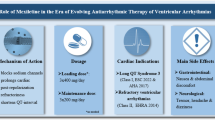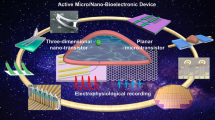Abstract
The whole-cell voltage-clamp technique was applied to isolated ventricular myocytes to investigate the effects of extracellular and intracellular zinc application on L-type Ca2+ channel currents (I Ca). Extracellular zinc exposure at micromolar concentration induced a reversible (with washout of ZnCl2) reduction (30%) of I Ca with no change in current-voltage relationship. On the other hand, an increase of intracellular free-zinc concentration, [Zn2+]i, from normal (less than 1 nM) to approx 7 nM with 10 µM Zn-pyrithione exposure caused an inhibition of 33±6% in the peak of the I Ca and altered the voltage dependency of L-type Ca2+ channels with a 10-mV left shift and a hump at around −40 mV in its current-voltage relation. In contrast, N,N,N′,N′-tetrakis(2-pyridylmethyl)ethylenediamine (TPEN) strongly inhibited the I Ca (42±2%), with only a small but detectable outward shift of the holding current measured at the end of the pulses. Zn-pyrithione and TPEN caused a reproducible decrease of the I Ca. Interestingly, TPEN application, without Zn-pyrithione pretreatment, inhibited the I Ca (35±2%) with no change in voltage dependency. Taken together, the results suggest that both extracellular and intracellular zinc increases under pathological conditions in cardiomyocytes can alter the I Ca, but their effects are not in the same order and same manner. One should consider these possible side effects when it is suggested to be vital to cardiovascular cell integrity and functions.
Similar content being viewed by others
References
E. Braunwald, Heart Disease, 3rd ed., WB Saunders, Philadelphia (1988).
B. L. Vallee and K. H. Galchuk, The biochemical basis of zinc physiology, Physiol. Rev. 73, 79–118 (1993).
W. J. Bettger, Zinc and selenium, site-specific versus general antioxidation, Can. J. Physiol. Pharmacol. 71, 721–724 (1993).
V. P. Kalfakakou, A. M. Evangelou, J. Benveniste, et al., The effects of Zn2+ on guinea pig isolated heart preparations, Biol. Trace Element Res. 36, 289–299 (1993).
D. Büsselberg, M. Pekel, D. Michael, et al., Mercury (Hg2+) and zinc (Zn2+): two divalent cations with different actions on voltage-activated calcium channel currents, Cell. Mol. Neurobiol. 14, 675–687 (1994).
D. Büsselberg, D. Michael, M. L. Evans, et al., Zinc (Zn2+) blocks voltage gated calcium channels in cultured rat dorsal root ganglion cells, Brain Res. 593, 77–81 (1992).
R. W. Tsien, P. Hess, E. W. McCleskey, et al., Calcium channels: mechanisms of selectivity, permeation, and block, Annu. Rev. Biophys. Biophys. Chem. 16, 265–290 (1987).
B. D. Winegar and J. B. Lansman, Voltage-dependent block by zinc of single calcium channels in mouse myotubes, J. Physiol. 425, 563–578 (1990).
D. A. Hanck and M. F. Sheets, Extracellular divalent and trivalent cation effects on sodium current kinetics in single canine cardiac purkinje cells, J. Physiol. 454, 267–298 (1992).
Z. S. Agus, I. D. Dukes, and M. Morad, Divalent cations modulate the transient outward current in rat ventricular myocytes, Am. J. Physiol. 261, C310-C318 (1991).
B. Hille, Ionic Channels of Excitable Membranes, Sinauer Associates, Sunderland, MA (1992).
D. Atar, P. H. Backx, M. A. Appel, et al., Excitation-transcription coupling mediated by zinc influx through voltage-dependent calcium channels, J. Biol. Chem. 270, 4273–2477 (1995).
B. Turan, H. Fliss, and M. Desilets, Oxidants increase intracellular free Zn2+ concentration in rabbit ventricular myocytes, Am. J. Physiol. 272, H2095-H2106 (1997).
D. Büsselberg, Calcium channels as target sites of heavy metals, Toxicol. Lett. 82, 255–261 (1995).
A. Bloc, T. Cens, H. Cruz, et al., Zinc-induced changes in ionic currents of clonal rat pancreatic β-cells: activation of ATP-sensitive K+ channels, J. Physiol. 529, 723–734 (2000).
B. Turan, M. Desilets, L. N. Acan, et al., Oxidative effects of selenite on rat ventricular contractility and Ca movements, Cardiovasc. Res. 32, 351–361 (1996).
N. Chiamvimonvat, B. O’Roueke, T. J. Kamp, et al., Functional consequences of sulfhydryl modification in the pore-forming subunits of cardiovascular Ca2+ and Na+ channels, Circ. Res. 76, 325–334 (1995).
P. Connell, V. M. Young, M. Toborek, et al., Zinc attenuates tumor necrosis factor-mediated activation of transcription factors in endothelial cells, J. Am. Coll. Nutr. 16, 411–417 (1997).
M. Hershfinkel, A. Moran, N. Grossman, et al., A zinc-sensing receptor triggers the release of intracellular Ca2+ and regulates ion transport, Proc. Natl. Acad. Sci. USA 98, 11,749–11,754 (2001).
B. Hennig, P. Meerarani, M. Toborek, et al., Antioxidant-like properties of zinc in activated endothelial cells, J. Am. Coll. Nutr. 18, 152–158 (1999).
A. Shisheva, D. Gefel, and Y. Shechter, Insulinlike effects of zinc ion in vitro and in vivo. Preferential effects on desensitized adipocytes and induction of normoglycemia in streptozocin-induced rats, Diabetes 41, 982–988 (1992).
P. Meerarani, P. Ramadass, M. Toborek, et al., Zinc protects against apoptosis of endothelial cells induced by linoleic acid and tumor necrosis factor alpha, Am. J. Clin. Nutr. 71, 81–87 (2000).
Author information
Authors and Affiliations
Rights and permissions
About this article
Cite this article
Turan, B. Zinc-induced changes in ionic currents of cardiomyocytes. Biol Trace Elem Res 94, 49–59 (2003). https://doi.org/10.1385/BTER:94:1:49
Received:
Revised:
Accepted:
Issue Date:
DOI: https://doi.org/10.1385/BTER:94:1:49




